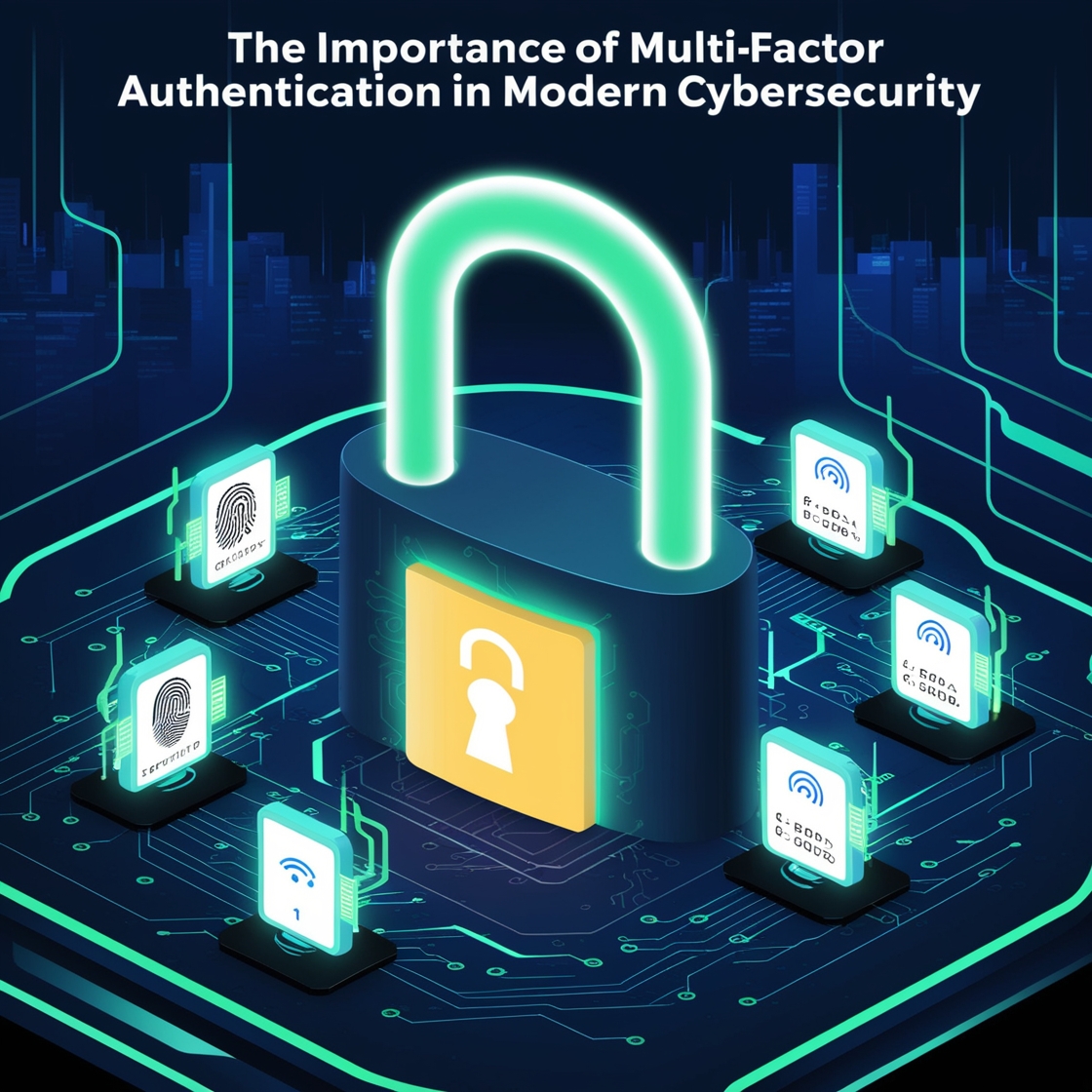Introduction to Cybersecurity Today
With digital transformation in full swing, cyber threats have reached new levels of sophistication. As companies and individuals store more sensitive information online, securing that data has become paramount. Proactive security measures, such as multi-factor authentication (MFA), offer a fortified approach to cybersecurity, protecting data from unauthorized access and potential breaches.
What is Multi-Factor Authentication (MFA)?
Multi-Factor Authentication, or MFA, adds an extra layer of security by requiring users to verify their identities using two or more independent credentials. Unlike single-factor authentication (usually a password), MFA combines different types of authentication factors to make it far harder for hackers to gain unauthorized access.
Types of Factors Used in MFA
MFA can use various factors to verify a user’s identity:
- Something You Know: Such as a password or PIN.
- Something You Have: For example, a smartphone, token, or security device.
- Something You Are: Biometrics, including fingerprint or facial recognition.
Using at least two of these factors significantly increases security by creating multiple barriers for potential hackers to overcome.
Why Single-Factor Authentication is No Longer Enough
The reality is that passwords alone are increasingly vulnerable. Weak passwords, password reuse, and phishing attacks make it easier for hackers to break through single-factor security. Techniques like brute-force attacks and credential stuffing mean that passwords alone simply don’t provide sufficient protection anymore.
How MFA Enhances Security
MFA adds a layered approach to security, which dramatically reduces the chances of unauthorized access. Even if a hacker obtains your password, they’d still need to overcome an additional layer, like entering a code sent to your phone or providing a fingerprint.
The Growing Importance of MFA in Modern Cybersecurity
With more of our personal and professional lives online, the demand for robust security is higher than ever. The rise of mobile applications, cloud storage, and online banking increases the amount of sensitive data at risk, making MFA an essential tool to protect against breaches and identity theft.
Common Types of MFA Solutions
Here are some popular MFA methods commonly used today:
- SMS-based Authentication: A code sent to the user’s phone.
- App-based Authentication: Apps like Google Authenticator or Microsoft Authenticator generate unique codes.
- Hardware Tokens: Physical devices, such as YubiKeys, provide a code or physical confirmation.
- Biometric Authentication: Fingerprint and facial recognition offer convenient yet highly secure options.
How MFA Works in Real-Life Scenarios
Imagine you’re logging into your online bank account. With MFA, you would enter your password (something you know) and then verify using a code sent to your mobile phone (something you have). This combination makes it far harder for anyone to gain access without your direct involvement.
Benefits of Implementing MFA
MFA provides numerous advantages for both businesses and individuals:
- Enhanced Security Posture: Protects sensitive data from unauthorized access.
- Improved User Trust: Users feel safer when their data is secure.
- Compliance with Regulations: Many industries require MFA for data protection.
Challenges of Implementing MFA
Implementing MFA can have its challenges, including:
- User Resistance: Some users resist change and find it inconvenient.
- Cost and Technical Integration: Setting up MFA requires investment in both time and resources.
- Accessibility Concerns: MFA may be difficult for users with limited access to devices or technology.
MFA and Mobile Security
Mobile devices store vast amounts of personal data, and with the rise of mobile banking and online shopping, securing these devices is critical. MFA, particularly biometric authentication, helps protect mobile devices from unauthorized access.
MFA in Cloud Security
Cloud storage and applications are prime targets for hackers. MFA provides an additional security layer for these platforms, making it harder for unauthorized users to access sensitive data stored in the cloud.
MFA and Regulatory Compliance
MFA is crucial for meeting compliance standards like GDPR, HIPAA, and others. These regulations mandate stricter data security, and MFA can play a critical role in ensuring compliance.
Best Practices for MFA Implementation
To get the most out of MFA, consider these best practices:
- Encourage Users to Enable MFA: Educate users on the importance of MFA.
- Combine Different Authentication Methods: For better flexibility and security, use a mix of authentication factors.
Conclusion
In today’s digital age, the importance of Multi-Factor Authentication in cybersecurity cannot be overstated. As cyber threats continue to evolve, MFA provides an essential layer of security that goes beyond traditional passwords, helping protect sensitive data across various platforms. As technology advances, MFA will likely become a standard in safeguarding digital identities and securing data worldwide.
FAQs
- Why is MFA considered more secure than passwords?
MFA uses multiple factors to authenticate users, making it much harder for hackers to breach compared to passwords alone. - What are the most common types of MFA?
The most common types include SMS-based codes, authenticator apps, hardware tokens, and biometrics. - How does MFA impact user experience?
Although it adds an extra step, MFA enhances security significantly, which can lead to greater trust and confidence among users. - Can MFA completely prevent all cyber attacks?
No security measure is 100% foolproof, but MFA significantly reduces the risk of unauthorized access. - How can companies encourage employees to use MFA?
Companies can provide education on the benefits of MFA, make the process user-friendly, and offer support for any technical difficulties.
